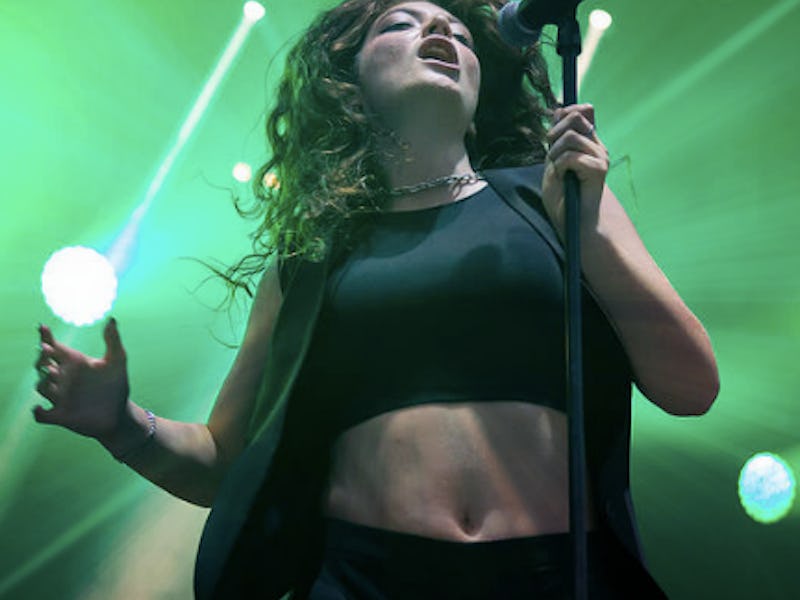Over a building disco beat on her single “Green Light,” Lorde sings, “I hear sounds in my mind / Brand new sounds in my mind.” In reality, how the pop artist experiences music is much more fascinating: She has a neurological condition called chromesthesia, a form of synesthesia in which color is perceived in response to a stimuli that doesn’t actually contain any element of color. Synesthesia stimuli could be anything as varied as a word, a number, or in Lorde’s case, music.
In an interview with The New York Times Magazine released Thursday, Lorde said that she makes use of her chromesthesia by color-coding each of her songs and mapping out the hues that she associates with the different themes in her music. She explained to the Times:
“From the moment I start something, I can see the finished song, even if it’s far-off and foggy,” she said. Her goal is to correct the colors and sharpen the contours until the precise configuration of chords, rhythms, emotions and textures she has been glimpsing all along snaps into focus. “It’s about getting the actual thing to sound like what I’ve been seeing.”
Lorde has said on Twitter that her chromesthesia played an especially strong role in the creation of “Green Light,” which she’s said is literally meant to represent a green traffic light.
To understand exactly how chromesthesia works, you have to start with synesthesia. People with this condition perceive one sense simultaneously with another sense. It’s believed that people’s brains start making these involuntary associations at birth. Researchers from the Australian National University discovered in 2015 that synesthetes have stronger connections between different brain areas than people without the condition, which in turn triggers brain activity in multiple regions.
“Things like hearing shapes, so a triangle will trigger an experience of a sound or a color, or they might have a specific taste sensation when they hear a particular sound,” that study’s lead author and psychologist Stephanie Goodhew, Ph.D., explained in a statement. “One person reported that smells have certain shapes. For example, the smell of fresh air is rectangular, coffee is a bubbly cloud shape and people could smell round or square.”
For people like Lorde and fellow musicians Pharrell Williams and Dev Hynes, musical characteristics such as pitch, key, and timbre become unconsciously associated with individual shades of color. Broadly speaking, synesthesia is believed to overall be a cross-activation of the brain regions associated with conceptual and perceptual processes, but people with chromesthesia have specific activations in their brain’s auditory cortex and fusiform gyrus.
Although people are rarely diagnosed with chromesthesia and only about 5 to 15 percent of adults have any form of synesthesia, it’s not unfathomable for someone without the condition to associate certain songs with certain colors. Studies have demonstrated that most people actually do that — the difference is that it’s a conscious choice.
